Sarah Polley’s Stories We Tell is an example of a first-person reflexive documentary which chronicles the reclamation of her story of origin through stories being told by her family and  biological father. Unlike the traditional documentary form, Sarah is the subject of the film she is directing and has a key role both behind and in front of the camera.
biological father. Unlike the traditional documentary form, Sarah is the subject of the film she is directing and has a key role both behind and in front of the camera.
Her pursuit of knowledge is part of the adventure that the stories take us on as she interviews her siblings, her ‘father’, her potential father, and her biological father. They recount stories about Sarah’s mother, Diane, who passed away when Sarah was 11 and try to figure out who Sarah’s father really is.
In an interview on CBC’s Q, Polley says that she wanted to create a film about storytelling, but didn’t intend for herself to be the subject. She did not want to accept the different perspectives she was hearing on the same story, so she tried to compile all of the stories into one place and see what overlapped and how she could piece together information about her late mother.
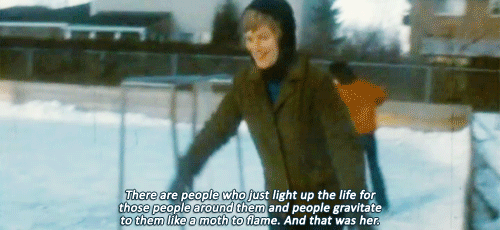
When she says, “we can’t all be right and we can’t all be wrong. So we must be unintentionally distorting things to varying degrees in order to feed our own version of what we need the past and history to be, and in our way, we must all be telling the truth as well”, the audience realizes that all of the participants are telling what they remember to be true, and that each story helps to put together the real origin story. Sarah says in her interview that her biological father originally wanted to tell this story, but that this was Sarah’s story to tell. The nature of the film is informal because she is interviewing relatives and people close to her mother rather than interviewing strangers. “Because the film was so much about storytelling and how stories are constructed, it would have felt really false to me to leave out the fact that I was constructing this story — and that this, in itself, was very subjective” – Sarah’s involvement in her film makes the documentary a subjective decision that she was able to manipulate and create a final product that she thought best reflected the story that she was able to gain authority over throughout her extended interview process. It is also subjective because the stories of Sarah’s mother cannot be qualified by Diane herself. When Sarah interviews her siblings and father candidates, the wall comes down and true feelings are made visible which changes the way she interacts with these people that she considers to be her family.-SNOW.gif)
The fact that her brother thought something was off because Sarah looked different and that he knew about the affair his mother had affects the relationship that these siblings have. Sarah’s research process ends up with her discovery of information that was withheld from her or that she thought was said in a joking manner.
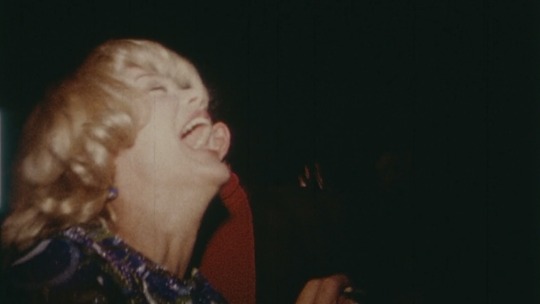
The inclusion of genuine and fabricated home videos is a film technique that Polley uses to blur the line between fact and fiction while providing visuals that mislead the audience. These fabricated videos affect the way that the audience is able to respond to the events in the film because she is tricking those who are unaware of whether or not the images and clues are accurate.
Sarah’s sister asks why anyone would care about their family and why this film-making process was necessary. So many cultures share stories and rely on oral tradition to keep stories and subjects alive – by documenting all of these stories, not only does Sarah find answers about who she is (and who she almost wasn’t), but she is able to connect with her mother and keep her mother’s spirit alive. Just because the Polley family story isn’t the same as our own stories, the realism of sharing memories and perceptions allow complete strangers to feel a connection and sense of accomplishment when Sarah learns the truth about her biological father.





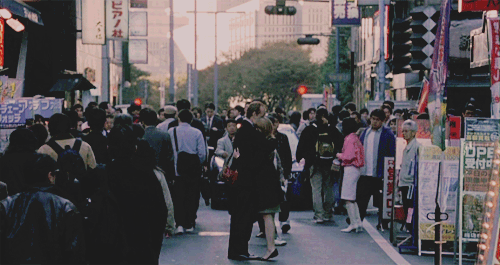
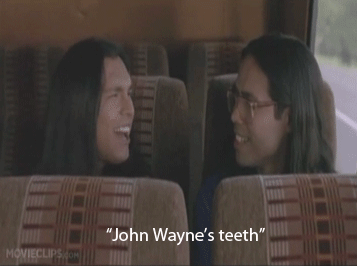
 and allowing me to see the same topics from a social science, humanities, and theatrical/film perspective. I recently read Sherman Alexie’s The Lone Ranger and Tonto Fistfight in Heaven which is an anthology of short stories that have given Alexie the opportunity to create a genre of his own –
and allowing me to see the same topics from a social science, humanities, and theatrical/film perspective. I recently read Sherman Alexie’s The Lone Ranger and Tonto Fistfight in Heaven which is an anthology of short stories that have given Alexie the opportunity to create a genre of his own –  In the text, Thomas and Victor fly next to a former Olympic gymnast and Thomas acknowledges the gymnast’s complaints about the government boycott of the Olympic team in 1980 by saying, “Sounds like you all got a lot in common with Indians” (Alexie, 67). These characters try to develop relationships with non-Indians and find common bonds, but poking fun at the similarities seemed to be too real and not well received by the gymnast.
In the text, Thomas and Victor fly next to a former Olympic gymnast and Thomas acknowledges the gymnast’s complaints about the government boycott of the Olympic team in 1980 by saying, “Sounds like you all got a lot in common with Indians” (Alexie, 67). These characters try to develop relationships with non-Indians and find common bonds, but poking fun at the similarities seemed to be too real and not well received by the gymnast.






















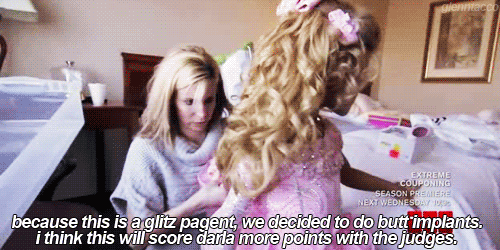







 epresents the underdogs within their gender and age cohorts and they unite to face adversity together, along with their VW bus that, like its owners, can’t catch a break.
epresents the underdogs within their gender and age cohorts and they unite to face adversity together, along with their VW bus that, like its owners, can’t catch a break. being skinny or that it is okay to treat yourself in moderation. Olive’s father and grandfather are the male influences that shape Olive’s understandings of patriarchal perceptions of women and her Electra complex tells her that she must present herself in a way in which her father will approve of.
being skinny or that it is okay to treat yourself in moderation. Olive’s father and grandfather are the male influences that shape Olive’s understandings of patriarchal perceptions of women and her Electra complex tells her that she must present herself in a way in which her father will approve of.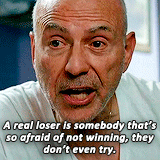 Not only does Richard lose his attempt at success, he loses his father to heroin use, steals the carcass from the hospital and keeps driving his bus that requires a team of runners to get it started – his continuous failures may not make him laugh, but human nature tells us to laugh at other people’s misfortunes making Richard’s character a joke.
Not only does Richard lose his attempt at success, he loses his father to heroin use, steals the carcass from the hospital and keeps driving his bus that requires a team of runners to get it started – his continuous failures may not make him laugh, but human nature tells us to laugh at other people’s misfortunes making Richard’s character a joke.

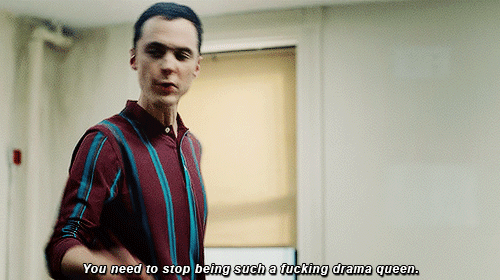
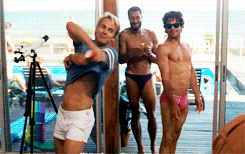 Ned leaves the boat to attend birthday celebrations for Craig, the current lover of Bruce Niles. Men wearing skimpy clothing, as discussed in Erving Goffman’s Codes of Gender – their actions and poses were not “natural” and they shared the same subject audience and embodiment of assumptions of desire (what men want): Fire Island Pines was full of the male gaze towards men and the return of the gaze.
Ned leaves the boat to attend birthday celebrations for Craig, the current lover of Bruce Niles. Men wearing skimpy clothing, as discussed in Erving Goffman’s Codes of Gender – their actions and poses were not “natural” and they shared the same subject audience and embodiment of assumptions of desire (what men want): Fire Island Pines was full of the male gaze towards men and the return of the gaze. ces his homosexuality on the beach island full of gay men, but lives in the closet when he returns to reality in New York City. Stereotypes of military men: rigid, manly, strong, masculine (alternatively, in Judith Lorber’s article, Marine women were expected to wear makeup and take classes on hair care, poise and etiquette to ensure that women were differentiated in a male-dominated organization). Bruce is not a feminine man, but he initially resists being recognized as the
ces his homosexuality on the beach island full of gay men, but lives in the closet when he returns to reality in New York City. Stereotypes of military men: rigid, manly, strong, masculine (alternatively, in Judith Lorber’s article, Marine women were expected to wear makeup and take classes on hair care, poise and etiquette to ensure that women were differentiated in a male-dominated organization). Bruce is not a feminine man, but he initially resists being recognized as the  into a medical problem to be treated by doctors rather than punished by judges”. This is reinforced in The Normal Heart when Emma first addresses the large group of men and tells them about the disease that is beginning to spread, encouraging them to abstain from sexual relations to prevent spreading the disease. The outrage stereotypes gay men as promiscuous, when they are not always thinking about having sex all the time.
into a medical problem to be treated by doctors rather than punished by judges”. This is reinforced in The Normal Heart when Emma first addresses the large group of men and tells them about the disease that is beginning to spread, encouraging them to abstain from sexual relations to prevent spreading the disease. The outrage stereotypes gay men as promiscuous, when they are not always thinking about having sex all the time.

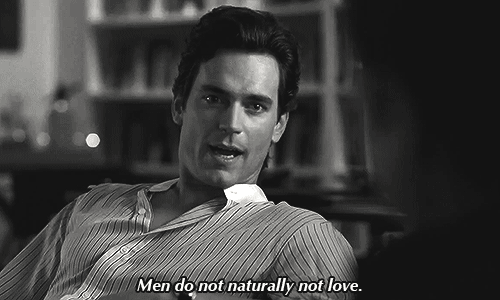 In Ned’s attempt to have TIME magazine publish information on AIDS, he falls in love with writer Felix Turner. The two writers are passion in raising awareness of the crisis. In the extremely tear-jerking scene where Emma marries Felix and Ned, this defies all the laws at the time (gay marriages being legal is a pretty recent allowance) and is summed up nicely by Hubbard who says that “people fall in love with individuals, not a sex”.
In Ned’s attempt to have TIME magazine publish information on AIDS, he falls in love with writer Felix Turner. The two writers are passion in raising awareness of the crisis. In the extremely tear-jerking scene where Emma marries Felix and Ned, this defies all the laws at the time (gay marriages being legal is a pretty recent allowance) and is summed up nicely by Hubbard who says that “people fall in love with individuals, not a sex”.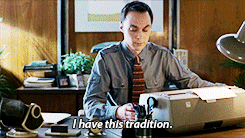








 ransforms throughout the film from the lifeless “treasure”/wife and mother of the nuclear family to a nature loving, love embracing feminist who can dress herself and run after the life she thinks the desires … Emma is almost childlike at the beginning of the film when Tancredi and Ida help her get dressed and she goes to bed early while all the “adults” party and she grows and matures and follows her impulses to establish herself as an adult when she runs away to be with Antonio after the unfortunate death of Edo, the other love who helped keep Kittesh alive.
ransforms throughout the film from the lifeless “treasure”/wife and mother of the nuclear family to a nature loving, love embracing feminist who can dress herself and run after the life she thinks the desires … Emma is almost childlike at the beginning of the film when Tancredi and Ida help her get dressed and she goes to bed early while all the “adults” party and she grows and matures and follows her impulses to establish herself as an adult when she runs away to be with Antonio after the unfortunate death of Edo, the other love who helped keep Kittesh alive.
 The hospital shown in the movie helped patients who could not pay for treatment and who may have been resistant to the drugs, but the passionate doctor, Emma (who persevered past her polio and was passionate about trying to learn about AIDS and save her patients unlike the lifeless Emma Rechhi last week) did whatever she could to help these men access treatment. Today, there are medications available to those who have healthcare and who will comply with the medical regiments to treat the illnesses. In marginalized communities, people are not able to access the healthcare that they need and the devastating losses that we experience in the film continue all over the world today.
The hospital shown in the movie helped patients who could not pay for treatment and who may have been resistant to the drugs, but the passionate doctor, Emma (who persevered past her polio and was passionate about trying to learn about AIDS and save her patients unlike the lifeless Emma Rechhi last week) did whatever she could to help these men access treatment. Today, there are medications available to those who have healthcare and who will comply with the medical regiments to treat the illnesses. In marginalized communities, people are not able to access the healthcare that they need and the devastating losses that we experience in the film continue all over the world today.